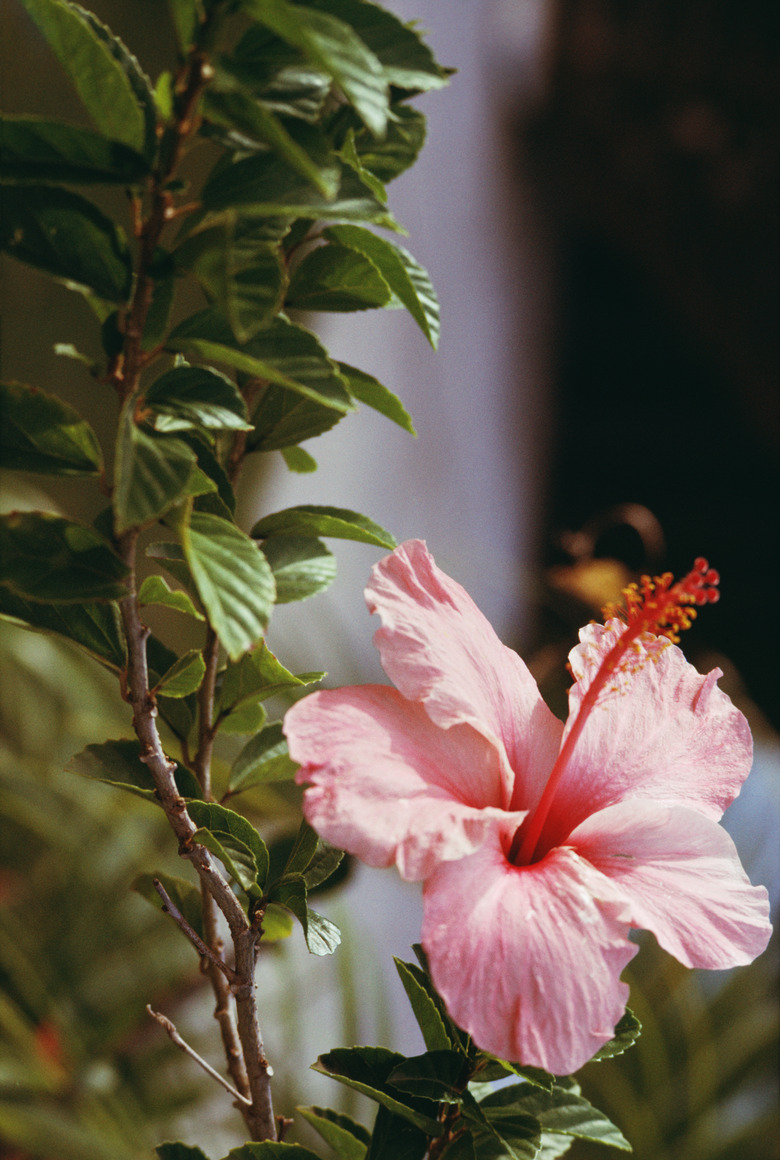How Does A Hibiscus Reproduce?
Hibiscus flowers reproduce in multiple ways, giving gardeners options when they want to expand the amount of flowers in their outdoor spaces. Hibiscus (Hibiscus lunariifolius) grows in a variety of vivid colors. The tropical look of the flowers is attractive to humans and hummingbirds, which may both be essential in helping the plant to reproduce.
Propagation
Hibiscus flowers reproduce from seeds, which the plants create after the blossoms have been pollinated. Gardeners may propagate the plants with seeds, but it's more common to use cuttings or grafting to create new hibiscus flowers. Cuttings may be taken from healthy, established hibiscus flowers. Parts of mature plants are also taken to create new grafting. Naturally, hibiscus flowers reproduce only through seeds, but with human intervention it's possible to re-create plants by harvesting pieces from existing flowers.
- Hibiscus flowers reproduce in multiple ways, giving gardeners options when they want to expand the amount of flowers in their outdoor spaces.
- Gardeners may propagate the plants with seeds, but it's more common to use cuttings or grafting to create new hibiscus flowers.
Hummingbirds
Hibiscuses are among the plants pollinated by insects and birds. Hummingbirds are essential in the natural pollination of hibiscus flowers. Deep inside the flower, hummingbirds find the rich nectar that attracts them to the plant. The plant also produces pollen, which is transferred from one flower to the next as the hummingbird flits from blossom to blossom in search of more nourishment. Pollen is essential in pollination, the reproductive process of plants.
Pollination
Like humans, flowers have different genders. Pollen is found on the stamen of male flowers. Hummingbirds transfer the pollen from the male hibiscus to the stigma of the female hibiscus. Once pollen has found its way to the stigma, it moves down a tube into the ovary. From there, the pollen fertilizes an ovule. It's the ovule that ripens into a seed, which may be planted in the ground to create a new hibiscus.
- Hibiscuses are among the plants pollinated by insects and birds.
- Once pollen has found its way to the stigma, it moves down a tube into the ovary.
Cuttings
Stem cuttings may be taken from established hibiscus plants in spring or summer. After removing the cutting, plant it immediately. Roots will be formed in the next six weeks. The hibiscus will flower after nine months, and you'll officially have a new plant. Cuttings are also taken through grafting, the art of placing two different hibiscus plants together to fashion a new plant. A stem of one plant and rootstock of another are grafted and planted together to create a new hybrid during this process, which can be very complex. Grafting is not for the casual gardener, but taking cuttings to reproduce hibiscus plants is a comparatively simple procedure.
- Stem cuttings may be taken from established hibiscus plants in spring or summer.
- A stem of one plant and rootstock of another are grafted and planted together to create a new hybrid during this process, which can be very complex.
